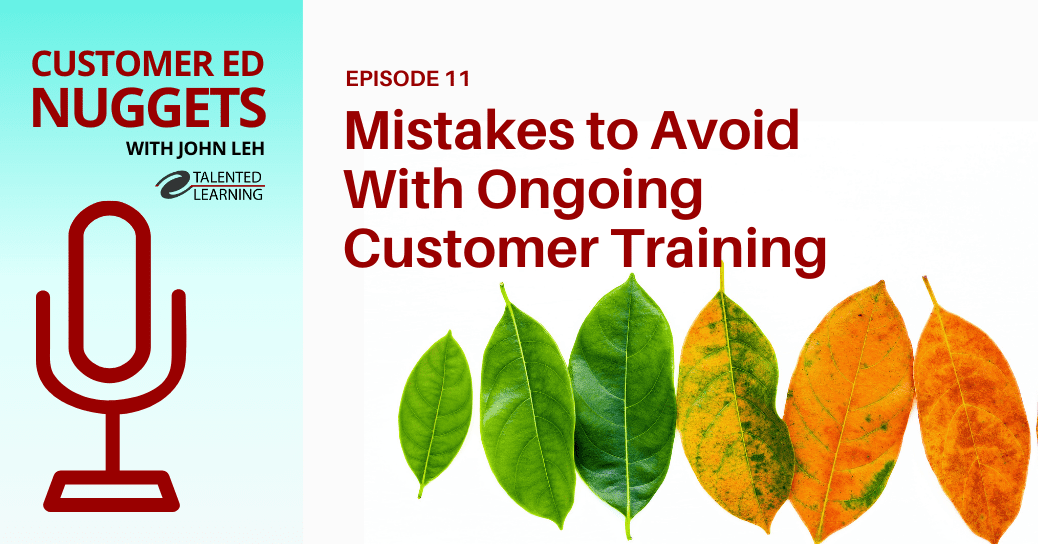
At Talented Learning, we help all kinds of organizations big and small find the right LMS for their needs. With 13 years in LMS sales and now nearly 3 years as LMS selection consultants, we’ve been directly involved in $65,000,000 worth of LMS selling and buying.
Through practical, front-line experience, we’ve identified the information and steps that are most effective in defining requirements and formulating a short list of highly qualified vendors for any type of learning management scenario.
People often ask me, “What exactly should I expect from your LMS selection process and services?” The answer is easier to follow if we walk through a real-world example. So fasten your seatbelt and read on, as I share a recent story about of the hyper-competitive nature of the LMS market, and the logic needed to identify, compare and choose the ideal solution.
LMS Selection: The Challenge
One of today’s hottest LMS market segments is continuing education. Associations, universities and commercial training companies are offering courses that help professionals of all types advance their work-related knowledge and skills. Recently, I completed an LMS selection project for a national association with this objective.
The association is dedicated to enabling and encouraging community service at the state and local level. Its “members” include approximately 1000 community service organizations. Each member organization has 5-150 employees, contractors and volunteers who need job-related training.
Within these organizations, individual knowledge and experience varies, as do learning needs and preferences for formal continuing education (CEU) credits, programs of study, books, courses, videos, files, templates, audio recordings, group discussions, expert forums, regional meetings, training/coaching telephone calls, and mini-nuggets of just-in-time performance support.
During the last decade, the association has accumulated a wealth of learning-related content in its LMS. However, finding the desired content type, format and size — on-demand — was a struggle. Learners who couldn’t locate desired content in the moment of need either abandoned the LMS or called the association for personalized assistance.
LMS Selection: The Process
The association decided to replace its inadequate open-source learning solution with a modern association-oriented LMS. Association LMSs are different from corporate or academic LMSs because they are designed to attract people who voluntarily pursue learning.
They’re built to find content, support mobile devices, gamification and social interactions. They must easily integrate with association management systems (AMS), ecommerce systems, single sign-on (SSO) technology, virtual classrooms, marketing automation tools, CRMs and event production systems.
We worked with the buyer to define requirements and identify four strong vendor matches. After verbally confirming requirements with each of the vendor candidates, we invited them to participate in our exclusive request for proposal (RFP) process.
All four vendors were qualified from an experience, functional, technical, service, and fiscal perspective so the association had to get serious to determine a winner. When all things are equal, price and subjective things like eagerness, attention to detail, understanding of business need, responsiveness, quality demonstrations and references will contribute to the decision process.
As is always the case, each vendor had strengths and weaknesses relative to the competition, so we fine-tuned the analysis during the final selection phase.
For each strength or weakness, we attempted to quantify incremental benefits in terms of potential revenue generation, cost reduction or improvement in learner experience. In other words, we used quantitative analysis to determine if extra non-critical features were worth the cost premium.
The answer emerged after we completed the following 4-step comparative process:
Step 1: Compare Annual License Models
In addition to delivering training to member users, the association also sells courses to non-members, hoping the value of educational content will lead them to join.
This means they needed an LMS with a “usage-based” license model that lets them provide access and create learning records for many potential learners — both known and unknown — but charge the association only for learners who actually register or buy a course in an annual period.
We asked vendors to submit pricing for 15,000 “active” users/year so we could compare “apples-to-apples” bids, as illustrated below:
As you can see, among these comparable solutions the price difference between lowest and highest was $135,000, with an average bid of $143,750. Vendor 2 quickly emerged as the option to beat.
Step 2: Compare One-Time Implementation and Setup Pricing
For one-time setup, implementation and administrative training, we asked each vendor for a tailored implementation and setup package that included these elements:
- Full-service implementation process and services, including an upfront onsite workshop.
- Migration of 50 online courses, 10 years of discussion group forums and posts, and a digital document library with thousands of documents.
- Two-way integration with NetFORUM AMS — including data shared with the AMS for single sign-on, course. purchase/progress/completion and CEU credits earned — as well as detailed profile, organization, member status and other non-training data passed to the LMS to facilitate grouping, content recommendations, promotions and reporting.
- Integration with Google Analytics for tracking learner usage patterns and technical footprint.
- Integration with Adobe Connect so association administrators create a course once in the LMS, and it is automatically created in Adobe. Also, Adobe must share attendance and participation records with the LMS.
- A discretionary development account with 100 hours for potential enhancements.
- Virtual or onsite administrative training.
It is important to specify your needs as an LMS buyer, so vendors respond to your RFP with a complete solution price, rather than a base price with detailed scoping (and costs) to be determined. It’s foolish to delay scoping and pricing to the first step in implementation because you lose all buying leverage. Why needlessly put yourself at the mercy of any vendor? There’s no time like the sales process to get the best deal.
In this case, the four shortlist vendors provided the following one-time implementation and setup pricing:
These one-time implementation bids averaged $75,250 with a $40,000 range from lowest to highest. This did not change the status of Vendor 2 as the price leader.
However, for the clearest financial comparison, it’s important to evaluate competing solutions in a 1st-year and 3rd-year total cost of ownership (TCO) time/cost horizon.
Step 3: Compare Total Cost of Ownership
Putting it all together, the chart below summarizes one-time setup and implementation costs, annual costs, and first-year and third-year total cost of ownership:
Among vendors that could meet or exceed all stated requirements, vendor 2 clearly was the most economical solution and it met all requirements. Unless there were compelling reasons to eliminate vendor 2, vendors 1, 3 and 4 needed to justify their premium (whether they realized it or not).
Was there measurable value in spending 2x or 3x for other solutions? Sizzle features are great, but are they $200,000 great? If not, the client would be wise to save the money and invest it in quality content development, promotion and other related needs. The next step revealed the answer.
Step 4: Demo Drilldown
Each vendor was invited to present its solution to association decision-makers in a virtual demonstration. As it turned out vendor 2 was the most prepared, delivered the most compelling value proposition and tightest demonstration creating even more clear separation from the competition. Done deal.
All three higher price contenders displayed some innovation “sizzle” that swayed the selection team in the moment but never realistically. (I’ll discuss these demo performances in an upcoming blog post).
After the demos underscored the value of all four solutions, our rigorous upfront comparative analysis made it easy for the association to confidently choose a new LMS vendor. In this particular case, price and prudence won.
LMS Selection: The Takeaway
There are hundreds of viable LMS solutions in the market. Many will “work” for any given opportunity, just as many vehicles will “work” as your family car.
Sure, you can squeeze your family of four into a speedy, two-door coupe, but for daily errands and long-haul trips, the practicality and affordability of a minivan wins the day. It all depends on your needs.
Similarly, with LMS selection, it pays to define your requirements and spend time evaluating only qualified short-listed vendors. For developers of learning management technology, this is bad news.
The days of coasting to a victory based on product strengths and minimal sales effort are over. When competing against qualified specialists — or anybody for that matter — price, value, reputation and service matter.
Thanks for reading!
Want more insights? Replay our on-demand webinar
Custom Learning Experiences: When No LMS Will Do
Are training revenues the lifeblood of your business? With so much at stake, you can’t afford a learning platform and content that misses the mark. Yet, even with more than 700 LMSs available today, it’s easy to come up short.
So, what should you do when an out-of-the-box LMS can’t meet your commercial training objectives? Join John Leh, CEO and Lead Analyst and Edward Daciuk, Principal Learning Strategist at ExtensionEngine, when they explore this topic in depth. You’ll learn:
- Characteristics of a custom learning experience
- How custom learning experiences can differentiate your training business
- When this approach does/does not make sense
- Business drivers for custom experiences vs. standard LMS solutions
- How to create a multi-year strategy
- Real-life examples
Need Proven LMS Selection Guidance?
Looking for a learning platform that truly fits your organization’s needs? We’re here to help! Submit the form below to schedule a free preliminary consultation at your convenience.
Share This Post
Related Posts
The Future of Customer Education: Customer Ed Nugget 16
Customer education is rapidly evolving as organizations embrace new strategies and tech. What does this mean for the future of customer education? See what experts say on this Customer Ed Nuggets episode
Education Strategy Mistakes to Avoid: Customer Ed Nugget 15
What does it take to deliver a successful customer education program? It starts with a solid education strategy. Learn how to avoid common pitfalls on this Customer Ed Nuggets episode
Which LMS is Best for You? New Shortlisting Tool for 2024
How can you find the best learning system for your business? Our LMS shortlisting tool can help. Learn about the 2024 RightFit Solution Grid. Free, reliable guidance based on our independent research
How to Build a Learning-Based Business: Executive Q&A Notes
Building and selling online courses may seem easy, but building a profitable learning-based business is far more complex. Find out what successful leaders say about running this kind of business
The Rewards of Community Building: Customer Ed Nugget 14
What role does community play in your customer relationships? Find out why community building is such a powerful force in customer education on this Customer Ed Nuggets episode
Benefits of Training Content Syndication: Customer Ed Nugget 13
If you educate customers online, why should you consider content syndication? Discover 10 compelling business benefits in this Customer Ed Nuggets episode
Top Marketing Skills to Master: Customer Ed Nugget 12
Successful customer education programs depend on professionals with expertise in multiple disciplines. Which marketing skills lead to the best results?
How to Measure and Improve Partner Training ROI
An educated channel is a successful channel. But how do you know if your educational programs are effective? Learn from an expert how to evaluate partner training ROI
Mistakes in Ongoing Customer Training: Customer Ed Nugget 11
Customer education doesn't stop with onboarding. It pays to invest in ongoing customer training. Learn which mistakes to avoid in this Customer Ed Nuggets episode

















FOLLOW US ON SOCIAL